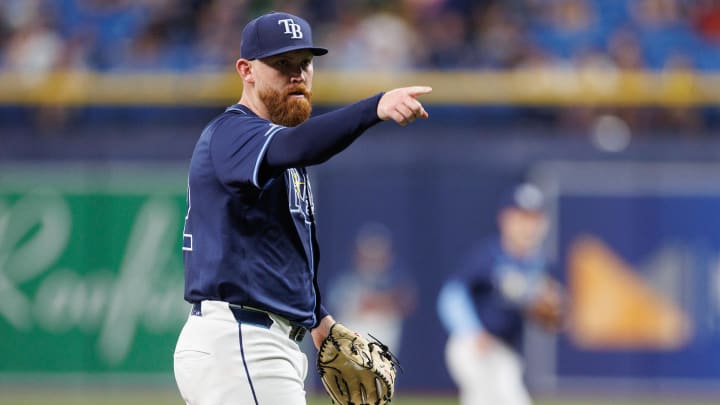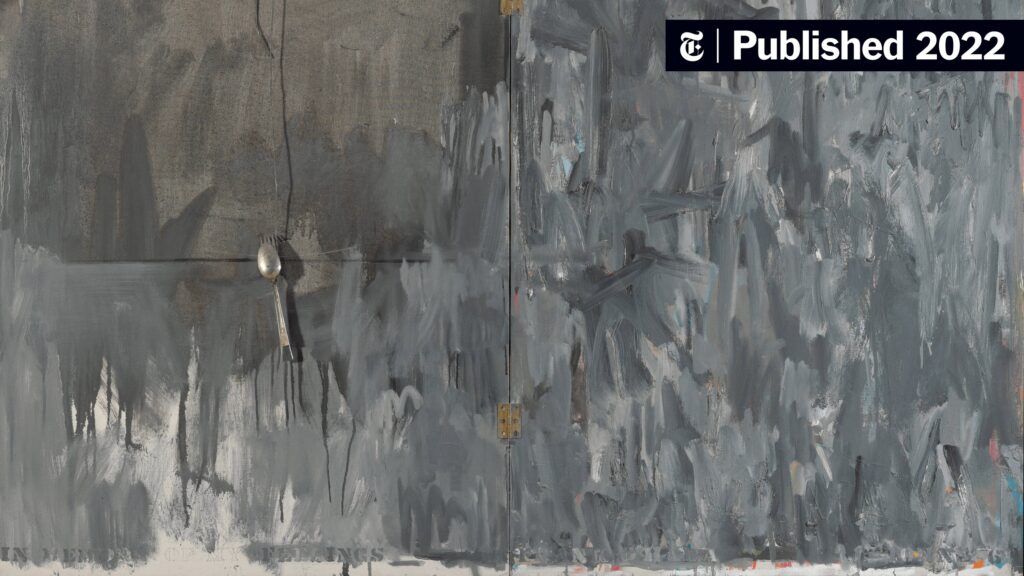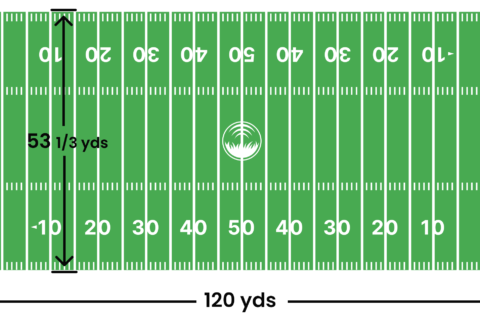Painting the corners in baseball pitching aims to deceive the batter and induce weak contact. It makes hitting more difficult by targeting the edges of the strike zone.
In baseball, pitchers often aim for the corners of the strike zone to gain a strategic advantage. By placing the ball on the edges, pitchers can confuse batters and reduce their chances of making solid contact. This technique forces batters to swing at pitches that are harder to hit cleanly, often resulting in groundouts, pop-ups, or strikeouts.
Mastering this skill requires precision and control, making it a crucial part of a pitcher’s repertoire. Effective corner painting can significantly impact the outcome of a game, showcasing the pitcher’s skill and strategy.

Credit: www.facebook.com
The Art Of Pitching In Baseball
Pitching in baseball is a true art form. It requires precision, skill, and strategy. A pitcher aims to outsmart the batter. One key tactic is painting the corners of the strike zone. This technique can make or break a game.
The Role Of Precision
Precision in pitching is crucial. A well-placed pitch can lead to strikes. It can also force the batter to make poor decisions. Painting the corners means throwing the ball to the edges of the strike zone. This strategy keeps the batter guessing.
Let’s look at why precision matters:
- Confuses the Batter: Batters find it hard to predict.
- Limits Hits: Well-placed pitches reduce the chance of solid hits.
- Increases Strikes: More strikes mean fewer base runners.
Understanding The Strike Zone
The strike zone is the area a pitcher aims for. It is a key part of the game. Knowing its dimensions helps in painting the corners.
| Top of the Zone | Bottom of the Zone | Width of the Zone |
|---|---|---|
| Just below the chest | Knees | 17 inches (plate width) |
Each pitch must pass through this zone. Edges are especially tricky for batters. Here are some points to note:
- Upper Corners: Hard to reach, often result in pop flies.
- Lower Corners: Tempt batters to swing, often result in ground balls.
- Inside Corners: Jam the batter, reducing hitting power.
- Outside Corners: Make batters stretch, leading to weak contact.
Mastering the art of pitching involves understanding and utilizing the strike zone effectively. Each pitch should aim to exploit these edges.
Introduction To Painting Corners
Painting the corners in baseball is a unique pitching skill. This technique involves throwing pitches to the edges of the strike zone. The goal is to make the batter miss or hit weakly. Mastering this skill can make a pitcher very effective.
Defining The Technique
Painting the corners means placing pitches at the edges of the strike zone. The strike zone is the area over home plate where strikes are called. This area is between the batter’s shoulders and knees.
Pitchers aim for the corners to make it hard for batters to hit. They use different pitches like fastballs, sliders, and curveballs. Each pitch type has a different speed and movement. By mixing these, pitchers can confuse batters even more.
Key Points:
- Edges of the strike zone are targeted.
- Pitches include fastballs, sliders, and curveballs.
- Goal is to confuse and outmaneuver batters.
Historical Background
Painting the corners has been a part of baseball for a long time. Many famous pitchers have used this technique. Greg Maddux and Tom Glavine are two great examples. They were known for their precision and control.
Over the years, the importance of this skill has grown. Coaches now teach young pitchers to focus on accuracy. Pitchers who paint the corners are often more successful.
Notable Pitchers:
- Greg Maddux
- Tom Glavine
- Sandy Koufax
In summary, painting the corners is a vital pitching technique. It requires skill, precision, and practice. Pitchers who master this can dominate games.
Why Pitchers Paint Corners
In baseball, pitchers aim for the corners of the strike zone. This technique is called “painting the corners.” It makes pitching more effective and challenging for batters. Understanding why pitchers do this can reveal much about the strategy of the game.
Strategic Advantages
Pitching to the corners provides several strategic advantages. First, it makes it harder for batters to hit the ball well. The corners are farthest from the batter’s sweet spot. This reduces the chances of a powerful hit.
Second, it increases the likelihood of a strike call. Umpires are more likely to call strikes on pitches that are close to the edges. This helps pitchers get ahead in the count.
Finally, it keeps batters off-balance. When a pitcher consistently throws to the corners, batters can’t predict the pitch location. This makes it harder for them to swing accurately.
Psychological Impact On Batters
Painting the corners also has a psychological impact on batters. When a pitcher consistently hits the corners, batters feel more pressure. They know they have to swing at pitches that are harder to hit.
This pressure can lead to mistakes. Batters might swing too early or too late. They might also miss the ball entirely. The psychological stress affects their performance.
Pitchers use this to their advantage. By keeping batters guessing, they can control the game. The mental game is just as important as the physical one.
How Painting Corners Influences A Game
In baseball, painting the corners is a strategic move by pitchers. This tactic can significantly affect the game’s outcome. It requires precision and skill. By targeting the corners, pitchers can control the game’s pace. Let’s explore how this influences various aspects of the game.
Altering Batting Strategies
When pitchers consistently paint the corners, batters must adjust their strategies. They might need to choke up on the bat for better control. Batters may also have to swing earlier or later than usual. This can lead to more strikeouts and fewer hits.
The pressure on batters increases. They have less room for error. A well-placed pitch on the corner can make it harder for batters to connect with the ball. This tactic can disrupt even the most skilled hitters.
Impacting Umpire Decisions
Painting the corners also influences umpire decisions. Umpires must judge whether the pitch is in the strike zone. A pitch on the corner can be tricky to call. This can lead to more called strikes and fewer walks.
Umpires may have different interpretations of the strike zone. Consistent corner pitching can affect their judgment. It might result in more favorable calls for the pitcher. This can shift the game’s momentum.
Famous Pitchers And Their Corner-painting Mastery
Painting the corners in baseball is a skill many pitchers aim to master. This technique involves throwing the ball to the edges of the strike zone. Famous pitchers have used this strategy to dominate the game. They have become legends through their incredible precision and control.
Legends Of The Game
Some pitchers have become legends by mastering the art of corner painting. Their names are etched in baseball history due to their pinpoint accuracy.
- Greg Maddux: Known for his control and finesse. Maddux could place the ball exactly where he wanted.
- Tom Glavine: A teammate of Maddux, Glavine also excelled in painting the corners. He relied on his command rather than speed.
- Sandy Koufax: Koufax’s fastball and curveball made him a nightmare for hitters. His ability to hit the corners was unmatched.
Modern Maestros
Today’s pitchers continue the tradition of corner painting. They use advanced techniques and training to achieve precision.
| Pitcher | Team | Specialty |
|---|---|---|
| Clayton Kershaw | Los Angeles Dodgers | Curveball and Slider |
| Max Scherzer | New York Mets | Fastball and Changeup |
| Jacob deGrom | Texas Rangers | Fastball and Slider |
These modern maestros use data analytics to refine their skills. They study hitters’ weaknesses and exploit them by painting the corners. Their precision and control make them among the best in the game today.

Credit: www.si.com
Challenges And Controversies
Painting the corners in a baseball pitch is a skillful tactic. It involves throwing the ball to the edges of the strike zone. This strategy has its own set of challenges and controversies.
The Difficulty Of Perfect Execution
Executing a pitch to the corners is tough. The pitcher needs pinpoint accuracy. The slightest mistake can lead to a ball or a hit.
Here are some factors that make it difficult:
- Precision: The ball must land in a tiny area.
- Speed: High-speed pitches are harder to control.
- Pressure: Pitchers face immense pressure during games.
Even experienced pitchers struggle with consistency. A small error can change the game’s outcome.
Debates Over Fairness
Painting the corners often sparks debates about fairness. Some argue it gives pitchers an unfair advantage. The batter has less reaction time and space.
Here are the main points of debate:
| Supporters | Opponents |
|---|---|
| Skill: It showcases the pitcher’s skill. | Unfair: Harder for batters to predict. |
| Strategy: Adds strategic depth to the game. | Luck: Relies too much on umpire’s call. |
| Excitement: Makes the game more thrilling. | Inconsistency: Umpires may call strikes differently. |
These debates continue among players, coaches, and fans. The balance between skill and fairness is at the heart of the issue.
Training To Paint Corners
Painting the corners means throwing the baseball to the edges of the strike zone. This technique can confuse batters and make them miss. It is a crucial skill for any pitcher to master. Training to paint corners requires both physical and mental practice.
Essential Drills And Techniques
There are many drills to help pitchers paint corners. Here are a few key exercises:
- Target Practice: Place small targets on the edges of the strike zone.
- Shadow Pitching: Practice pitching without a ball to perfect form.
- Video Analysis: Record and review your pitching to spot mistakes.
Consistent practice of these drills will improve accuracy. Always focus on hitting the corners with each pitch.
The Mental Game
The mental game is just as important as physical practice. A strong mind can make a big difference.
- Stay Calm: Keep your cool even if you miss a few pitches.
- Visualize Success: Picture yourself hitting the corners before each pitch.
- Confidence: Believe in your ability to hit the corners every time.
Mental strength helps pitchers stay focused. It also builds confidence in their skills.

Credit: www.youtube.com
The Future Of Painting Corners In Baseball
The art of painting the corners in baseball has always been crucial. Precision pitching is a key strategy for pitchers. They aim for the edges of the strike zone to challenge batters. As baseball evolves, the future of painting corners promises exciting advancements.
Technological Advancements
Technological innovations are transforming how pitchers paint corners. Advanced analytics provide insights into pitching performance. This data helps pitchers refine their techniques.
Pitch tracking systems, like Hawk-Eye and TrackMan, are essential tools. They offer real-time feedback on pitch location and movement. This information is invaluable for pitchers and coaches.
| Technology | Purpose |
|---|---|
| Hawk-Eye | Tracks pitch trajectory |
| TrackMan | Analyzes pitch speed and spin |
Virtual reality (VR) is also making waves. VR allows pitchers to practice in simulated environments. They can face virtual batters and perfect their corner-painting skills.
Evolving Strategies
Strategies for painting corners are evolving with the game. Coaches emphasize the importance of pitch variation. Mixing up pitch types keeps batters guessing.
- Fastballs
- Curveballs
- Sliders
- Changeups
Pitchers are learning to exploit batter weaknesses. Advanced scouting reports highlight where batters struggle. This information guides pitchers on which corners to target.
Another strategy is the use of sequencing. Pitchers plan a series of pitches to set up batters. They use different pitches to create patterns and deceive hitters.
The future of painting corners in baseball is bright. Technological advancements and evolving strategies will shape the game. Pitchers will continue to perfect the art of precision pitching.
Conclusion
Painting the corners in a baseball pitch is essential for effective gameplay. It challenges hitters and keeps them guessing. Mastering this skill can give pitchers a significant edge. Consistency and precision are key. Understanding this technique can enhance both player performance and game strategy.
Keep practicing to perfect your corner painting skills.








